Everyone’s favorite herbivorous carnivoran, the giant panda (Ailuropoda melanoleuca) is also the most herbivorous species of carnivoran, with over 60 species of bamboo making up over 99% of its diet. The giant panda lives across six mountain ranges located in China, a sliver of its former range which once extended into southwest China, Myanmar, and north Vietnam. Its range has mostly been reduced due to habitat loss, with its strongholds only persisting because mountain slopes cannot support agriculture. The giant panda is now one of the world’s most protected species and Chinese conservationists boast that the population now numbers 1,800 animals, a decent increase from the all-time low of 1,100 animals that was reported in the 1980’s.
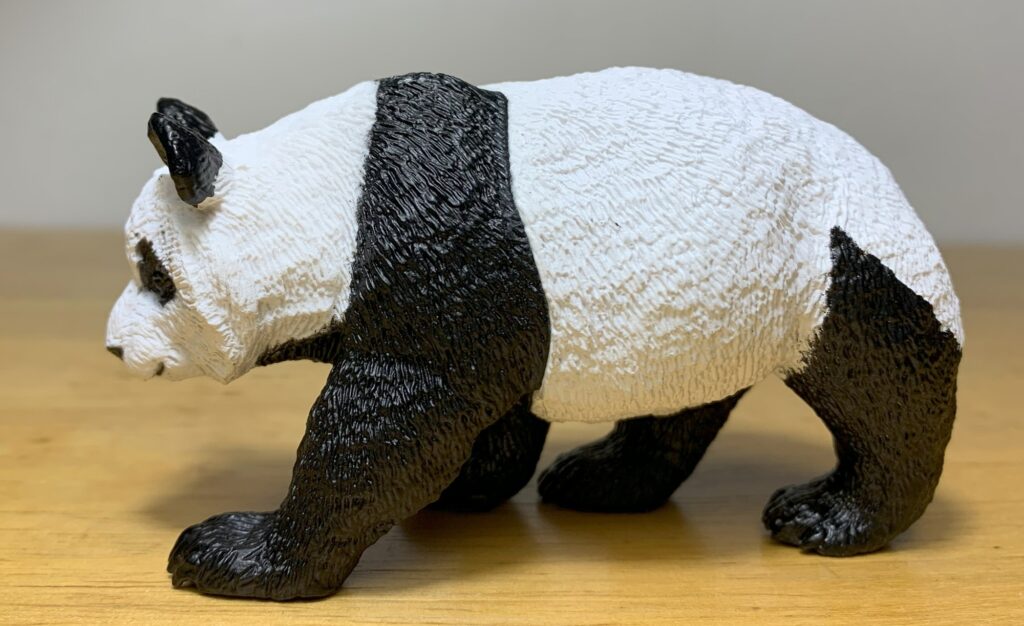
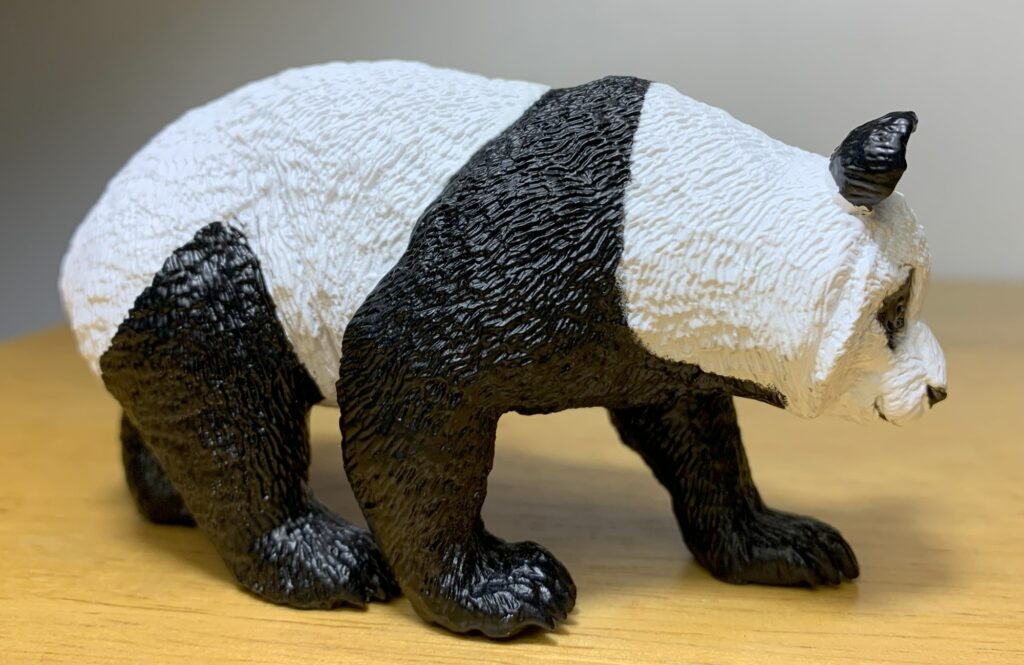
As one of the world’s most beloved and familiar animals the giant panda is significantly more well represented in the hobby than other bear species, especially in the case of the sloth and spectacled bear. You may have noticed that I’ve been steadily reviewing bears all year long, but as a one-figure-per-species collector I’ve now reached the end of my bear reviews, at least until someone makes a sloth or spectacled bear, the only two bears not represented in my collection. For the giant panda there was a glut of figures to choose from, but I went with Safari’s 2014 model, sculpted by Doug Watson.
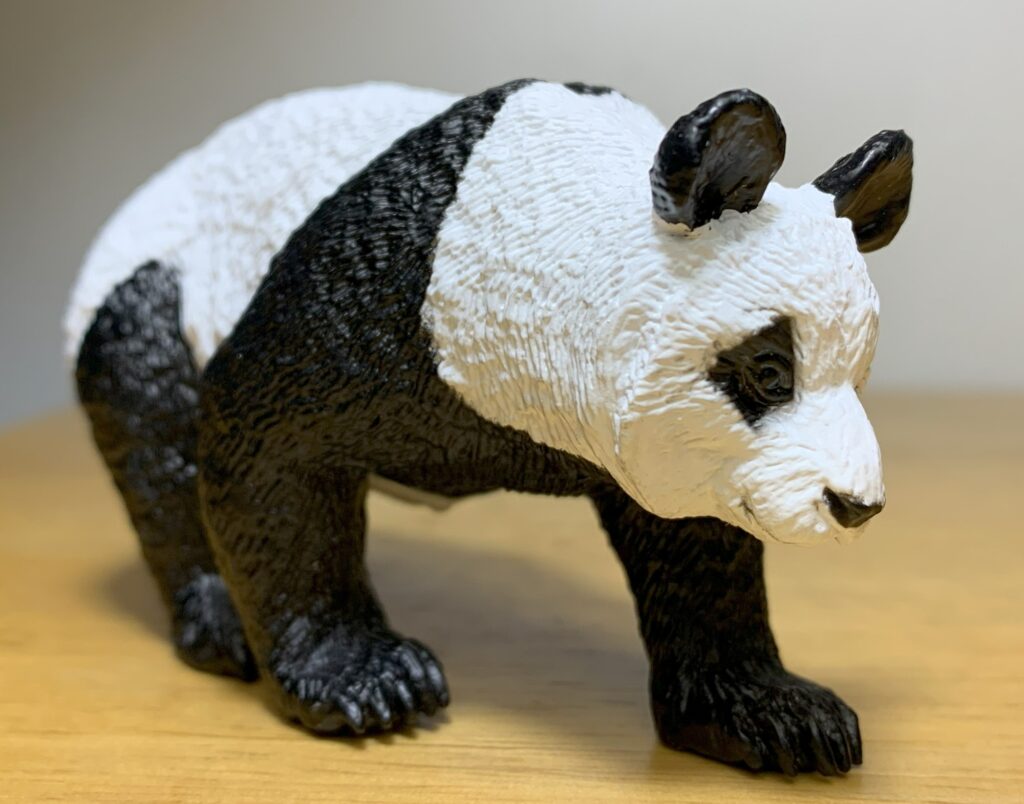
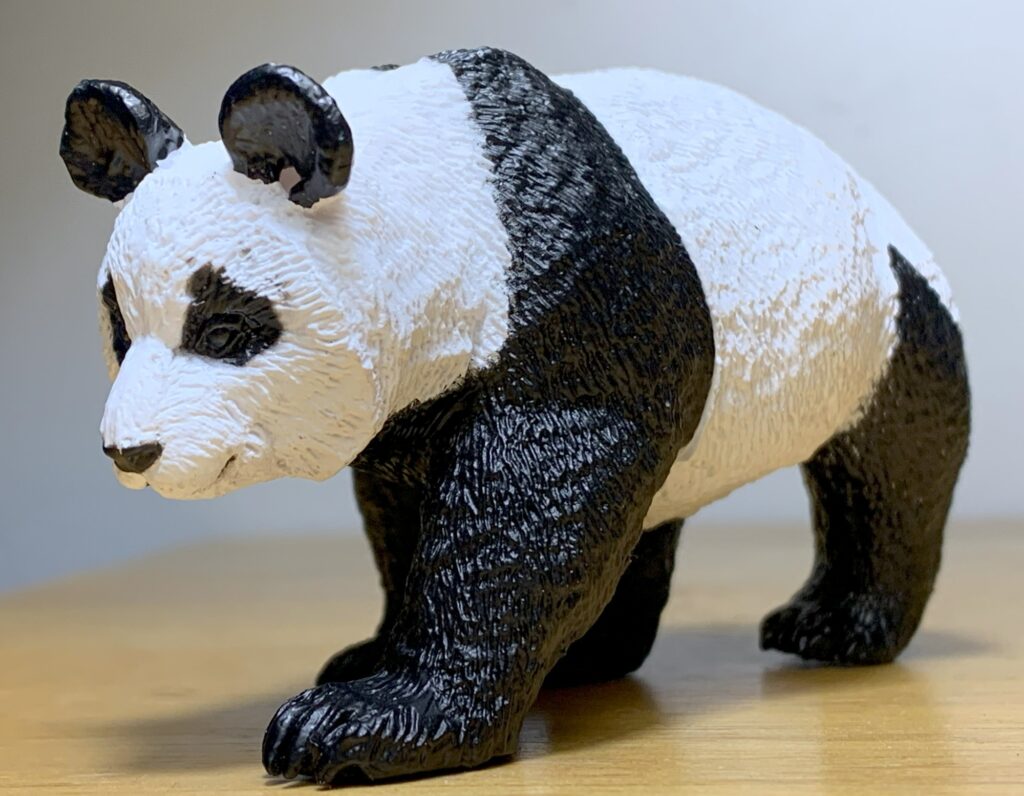
The giant panda has a head-body length of 47-70” (120-180 cm), a shoulder height of 27-33” (71-86 cm), and weighs between 154-275 lbs. (70-125 kg), with males being larger than females. The Safari figure measures 4” (10 cm) long and has a shoulder height of 2.25” (5 cm). Using shoulder height, the figure comes out to be 1/12-1/14 in scale. The figure is presented in mid-stroll with its head looking slightly downwards.
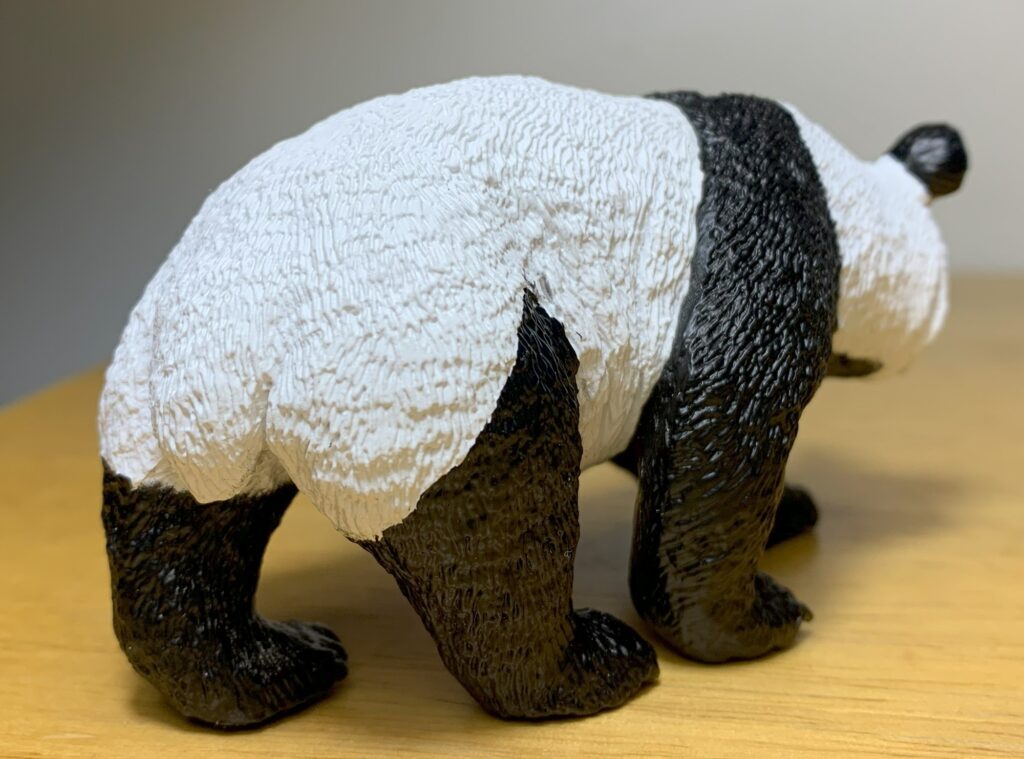
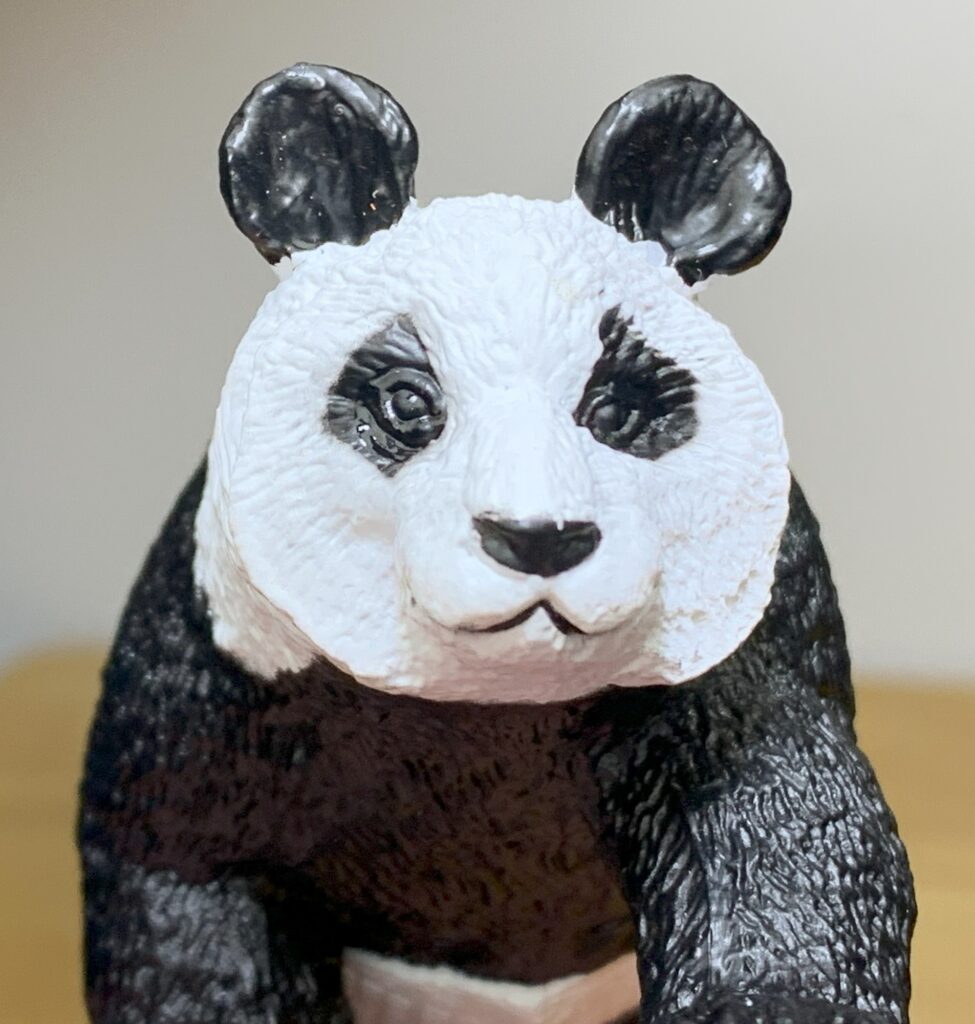
The figure is appropriately compact, sturdy, and plump, with large Mickey Mouse ears, a short muzzle, and a well-defined ruff of fur around the head. A fine coat of fur is etched into the sculpt and it nicely follows the various contours of the figure’s body. A slight ridge is sculpted along the underside, where the fur on either side of the body comes together. Where the limbs are close together on the right side you can see some deep grooves where the fur is pressed close. The tail is short, flat, and broad. The foot pads are beautifully sculpted and even include the panda’s “false thumb”, which is a modified sesamoid bone that functions as a thumb, allowing the panda to manipulate bamboo, and is padded like the digits.
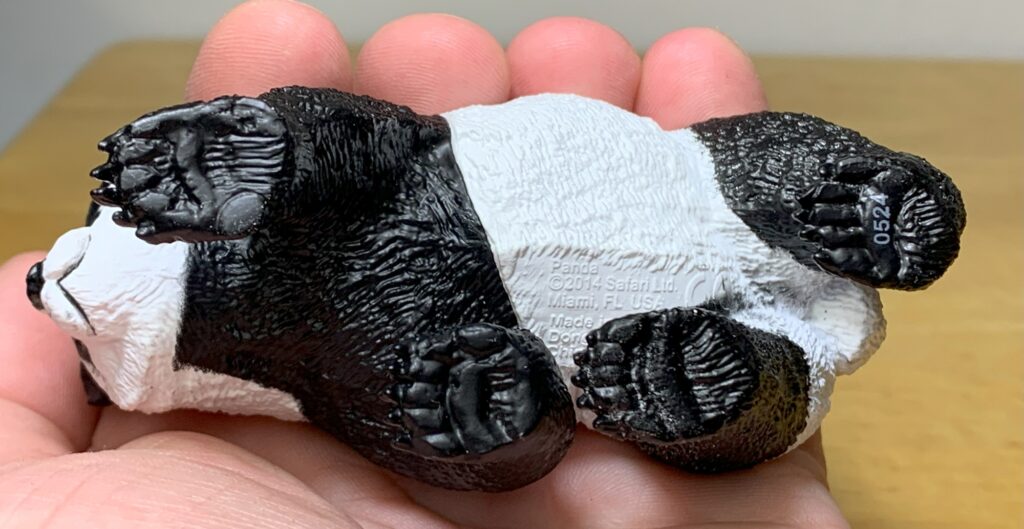
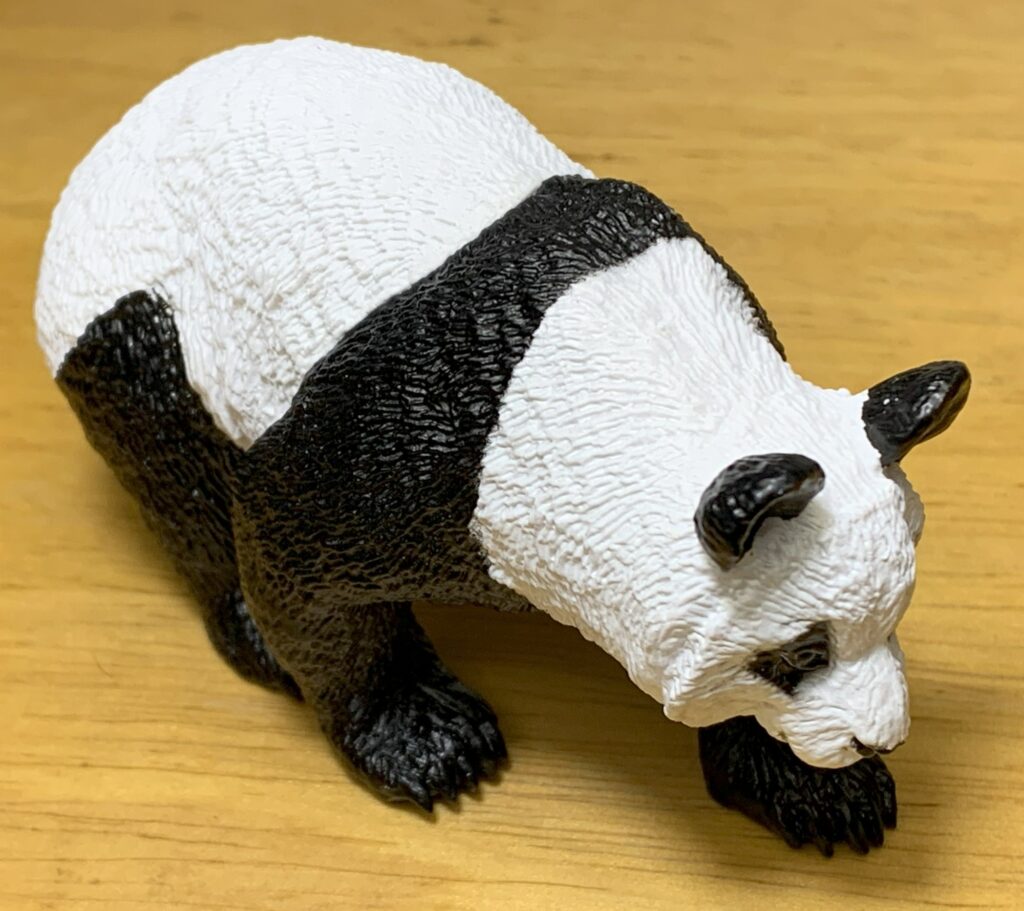
Naturally, the figure is black and white, but there is a subspecies of giant panda, known as the Qinling panda, that’s brown and white. The coloration of the panda is thought to serve as camouflage, with the white concealing the animal in snow and the black concealing it in shadows. It is also thought that this coloration makes it easier for pandas to find other pandas in the dense forests they live in. Whatever the purpose of this coloration, it is certainly iconic. I’m not sure that pandas would be so popular without it. The Safari figure has black eye patches and ears, black forelimbs where the black extends from the throat and up and over the shoulders, and black hindlimbs. The eyes and nose are black, and the mouth is outlined in black.
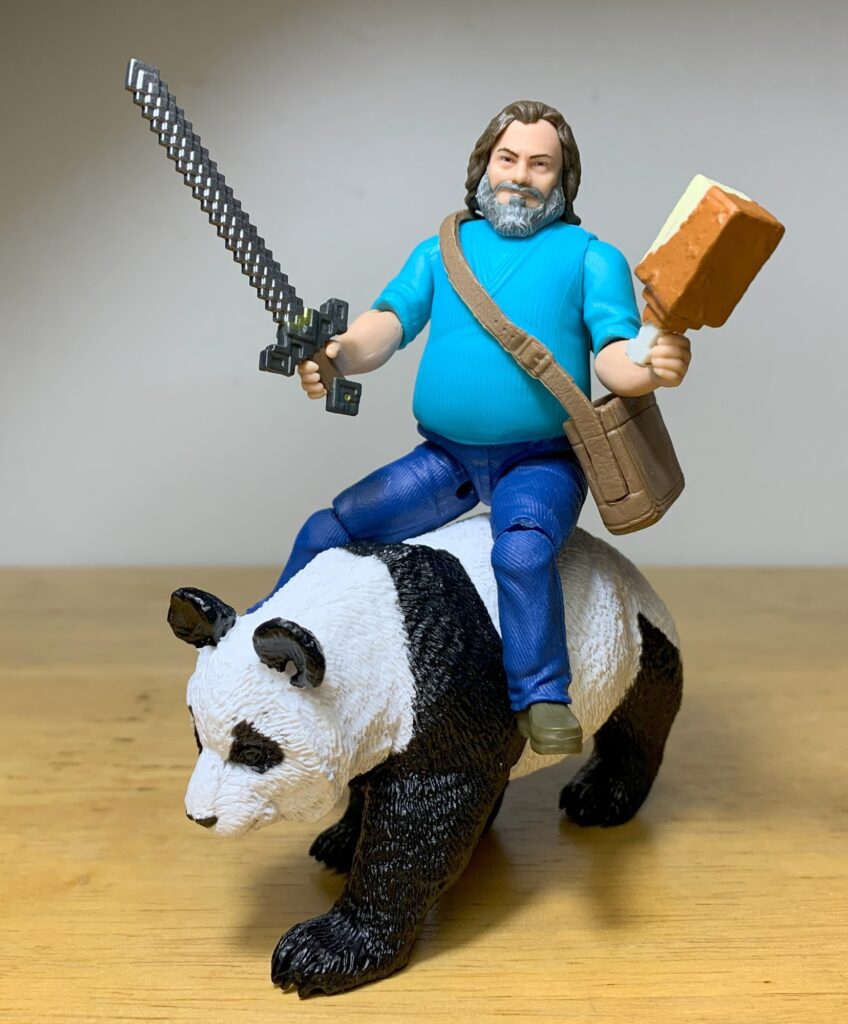
There exists a plethora of giant panda figures to choose from and if you’re only looking for one, selecting it can be a daunting task. When in doubt it’s always a safe bet to go with a Doug Watson sculpted figure, which assures high accuracy and craftsmanship. I’m happy to cap off my bear collection with the Safari Ltd. giant panda. Now, someone please give us a sloth and spectacled bear! This figure is currently in production and goes for about $7-10.
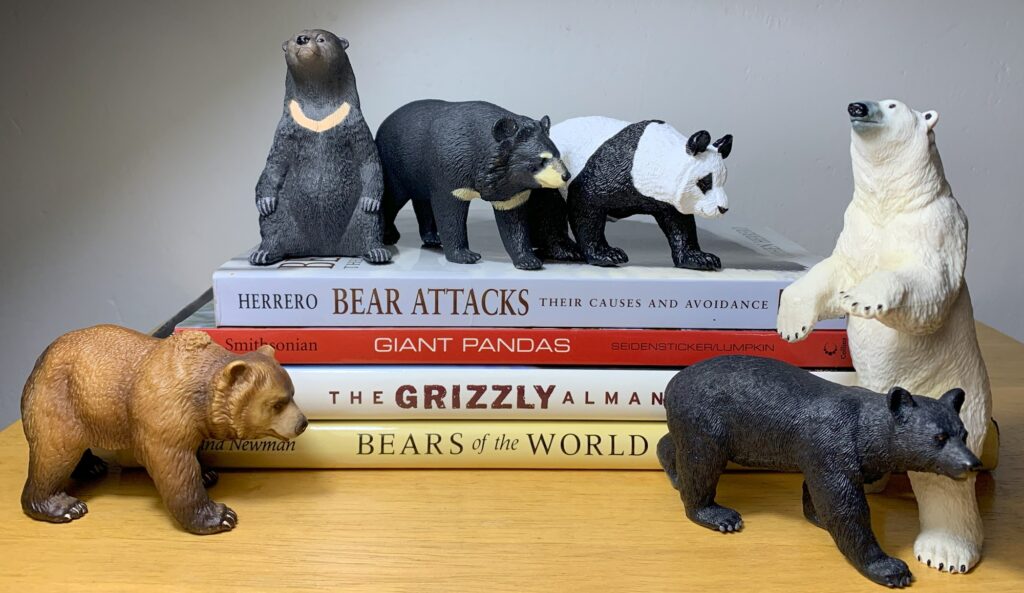
Disclaimer: links to Ebay and Amazon on the AnimalToyBlog are affiliate links, so we make a small commission if you use them. Thanks for supporting us!



